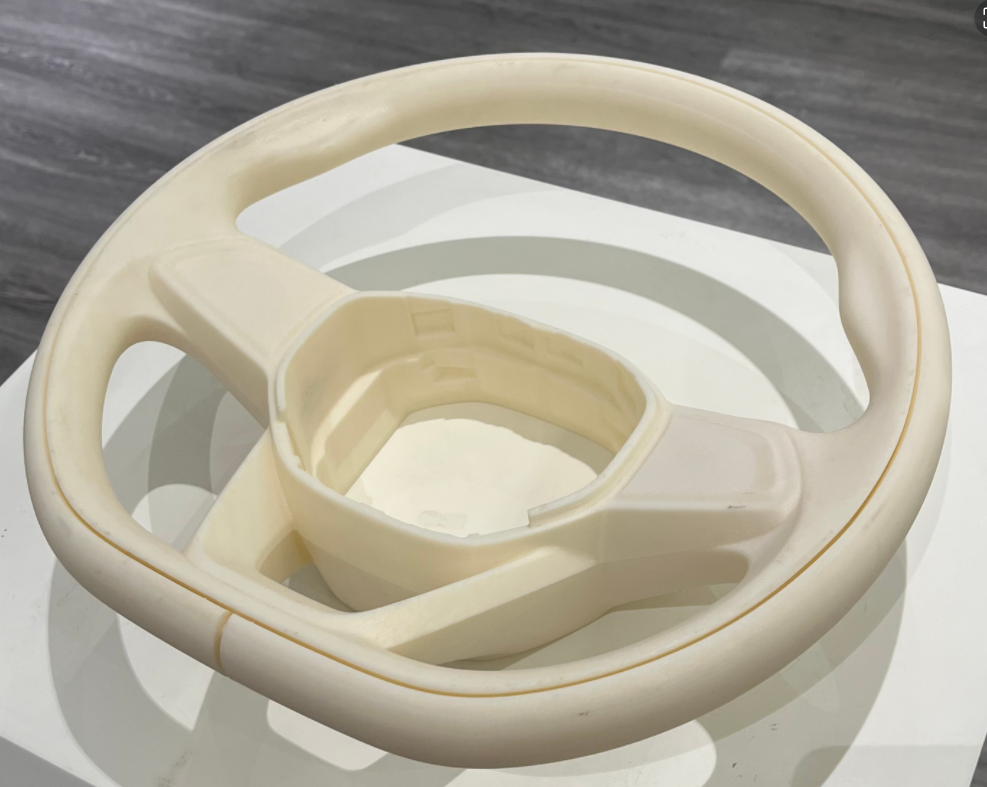Revolutionizing Automotive Reconstruction with Metal 3D Printing
The automotive industry has long been at the forefront of technological innovation, continually seeking ways to improve performance, efficiency, and aesthetics. In recent years, metal 3D printing has emerged as a transformative technology within this sector, particularly in the field of automotive reconstruction. This blog will explore the impact of metal 3D printing on automotive reconstruction, highlighting its benefits, applications, and future potential.
What is Metal 3D Printing?
Metal 3D printing, also known as additive manufacturing, involves the layer-by-layer deposition of metal powders that are melted and fused together to create solid objects. This technology has advanced significantly since its inception, with improvements in materials, precision, and scalability. In the automotive industry, metal 3D printing offers numerous advantages over traditional manufacturing methods, making it an invaluable tool for reconstructing vehicles.
Advantages of Metal 3D Printing in Automotive Reconstruction
- Customization and Precision
– Bespoke Parts: Metal 3D printing allows for the creation of custom parts tailored to specific vehicles. This is particularly useful for vintage or rare models where original parts may no longer be available.
– High Precision: The technology ensures high precision and accuracy, essential for parts that need to fit perfectly within existing assemblies.
- Reduced Lead Times
– Quick Prototyping: Metal 3D printing significantly reduces the time required to produce prototypes and final parts. This is crucial in automotive reconstruction, where time efficiency can lead to faster project completion.
– On-Demand Manufacturing: Parts can be produced on-demand, reducing the need for large inventories and long waits for manufacturing runs.
- Cost Efficiency
– Material Savings: Additive manufacturing is more material-efficient compared to subtractive methods, which waste excess material.
– Reduced Tooling Costs: The need for custom tooling is eliminated, lowering overall production costs.
- Complex Geometries
– Design Flexibility: Metal 3D printing enables the creation of complex geometries that would be difficult or impossible to achieve with traditional manufacturing methods. This allows for innovative design solutions in automotive reconstruction.
Applications in Automotive Reconstruction
- Restoration of Classic Cars
– Reproducing Obsolete Parts: Metal 3D printing is invaluable for restoring classic cars, where original parts may be unavailable. It allows enthusiasts to recreate intricate components with high accuracy.
– Enhancing Performance: Modern materials and design techniques can be applied to vintage car parts, improving their performance and longevity.
- Collision Repair
– Custom-Fit Parts: After an accident, metal 3D printing can produce custom-fit replacement parts, ensuring the repaired vehicle maintains its original integrity and appearance.
– Rapid Repair Solutions: Quick production of parts means that vehicles can be repaired and returned to the road faster.
- Prototyping and Testing
– Innovative Design Testing: Automotive engineers can rapidly prototype and test new designs for reconstruction projects, iterating quickly to achieve optimal results.
– Functional Testing: Metal 3D printed parts can be tested in real-world conditions, providing valuable data to refine designs and ensure reliability.
- Performance Upgrades
– Lightweight Components: By using advanced materials and optimized designs, metal 3D printing can produce lightweight components that enhance vehicle performance without compromising strength.
– Aerodynamic Enhancements: Custom aerodynamic parts can be 3D printed to improve vehicle efficiency and handling.
- Tooling and Fixtures
– Custom Tooling: Metal 3D printing is not just for end-use parts; it can also create custom tools and fixtures needed for the reconstruction process, improving efficiency and accuracy in assembly and repairs.
Challenges and Considerations
While the advantages of metal 3D printing in automotive reconstruction are significant, there are also challenges to consider:
- Material Limitations: Not all metals are suitable for 3D printing. Currently, the metals in 3d Printing including Alunimum, 316L Steel, 17-4PH Steel, Maraging Steel, Copper, Co_Cr, Titanium. The development of new materials that are compatible with additive manufacturing processes is ongoing.
- Surface Finish:3D printed parts often require post-processing to achieve the desired surface finish, which can add to production time and cost.If you are looking for professional companies who are good at this service, visit IN3DTEC online store to get instant quote.
- Size Constraints:The build volume of 3D printers can limit the size of the parts that can be produced in a single print. Larger parts may need to be printed in sections and assembled.
The Future of Metal 3D Printing in Automotive Reconstruction
The potential of metal 3D printing in automotive reconstruction is vast and continually expanding. As technology advances, we can expect even greater improvements in materials, precision, and production speed. The integration of artificial intelligence and machine learning with 3D printing processes will further enhance design optimization and manufacturing efficiency.
- Advances in Material Science
– New Alloys: Ongoing research is leading to the development of new metal alloys specifically designed for 3D printing, offering enhanced properties such as increased strength, durability, and resistance to corrosion.
– Composite Materials: The combination of metals with other materials, such as ceramics or polymers, can produce composite parts with unique characteristics, expanding the range of possible applications.
- Improved Printing Technologies
– Higher Resolution: Future 3D printers will achieve even higher resolutions, allowing for the creation of parts with finer details and smoother surfaces.
– Faster Printing Speeds: Advances in printer technology will reduce production times, making metal 3D printing an even more attractive option for automotive reconstruction.
- Integration with Smart Manufacturing
– IoT and Industry 4.0: The integration of Internet of Things (IoT) technologies and Industry 4.0 principles will enable real-time monitoring and control of the 3D printing process, leading to improved quality and efficiency.
– Automation: Increased automation in the production process will reduce labor costs and minimize the potential for human error.
Conclusion
Metal 3D printing is revolutionizing the way we approach automotive reconstruction, offering unprecedented levels of customization, efficiency, and design flexibility.
In summary, metal 3D printing stands as a game-changer for the automotive reconstruction industry. It bridges the gap between traditional craftsmanship and modern technology, ensuring that vehicles from all eras can be restored, repaired, and enhanced with unparalleled precision and efficiency.















